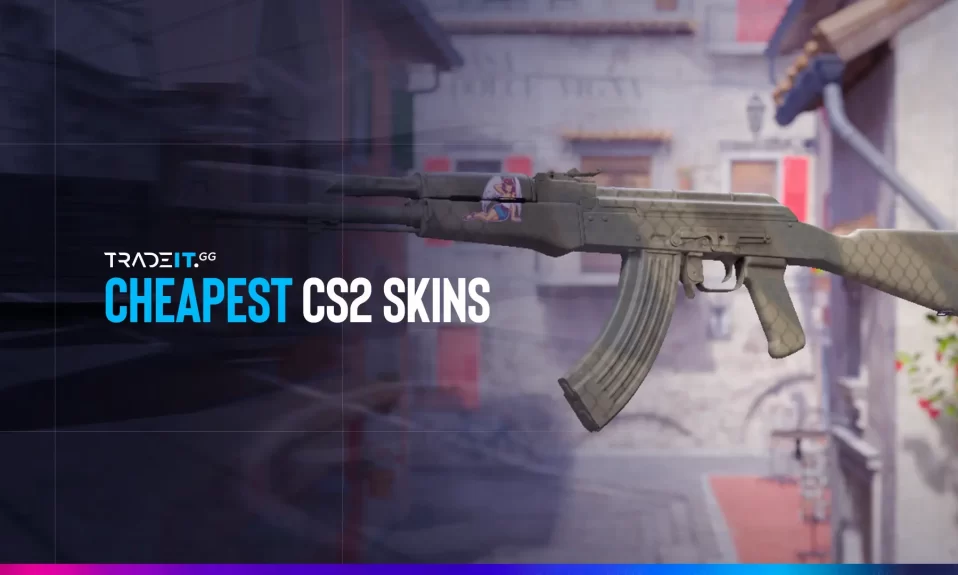Online Banking Insights
Your go-to source for the latest news and trends in online finance and banking.
Skin Deep: When Trading Goes Beyond Just Pixels in CS2
Explore the hidden depths of CS2 trading—it's more than just pixels! Discover the secrets behind virtual value and community connections.
Understanding the Value: How Skins Affect Game Economics in CS2
In the world of CS2, skins play a pivotal role in shaping the overall game economics. These virtual items not only enhance the aesthetic appeal of weapons but also contribute significantly to the game's economy. Players often buy, sell, or trade skins, which generates a dynamic marketplace fueled by supply and demand. The value of a skin can vary drastically based on its rarity, popularity, and condition, making it a key element for players looking to maximize their investment and enhance their gameplay experience. Understanding the intricacies of how skins influence the economy is crucial for both new and seasoned players alike.
The economic impact of skins can be further understood by examining how they affect player engagement and the overall CS2 community. Skins serve as status symbols, allowing players to showcase their inventory and distinguish themselves from others. Additionally, events, promotions, and updates often introduce new skins, thereby revitalizing player interest and encouraging microtransactions. As a result, developers can leverage this engagement to drive revenue, while players can find opportunities to capitalize on market trends. Thus, recognizing the value of skins is essential for comprehending the broader economic landscape of CS2.

Counter-Strike is a highly popular first-person shooter game that focuses on team-based gameplay and strategy. Players can choose to play as terrorists or counter-terrorists, working together to complete objectives such as bomb defusal or hostage rescue. Many professional players, like Yekindar, optimize their gameplay through specific settings. You can find more about yekindar settings that can enhance your performance in the game.
The Evolution of CS Skins: From Pixels to Real-World Currency
The journey of CS skins has transformed dramatically since their inception in the gaming community. Initially introduced as simple pixel-art enhancements for weaponry in Counter-Strike, these skins added a layer of personalization and flair to the gaming experience. Players quickly embraced these digital assets, leading to their evolution into a feature of considerable value. The game's developers recognized the potential for microtransactions, which paved the way for skins to transition from mere aesthetic upgrades to coveted collectibles.
As the popularity of skins soared, players began engaging in trading, sparking a thriving marketplace where CS skins became a form of virtual currency. What started as digital representations transformed into tangible assets, with some skins being valued at thousands of dollars. The rise of third-party platforms further fueled this evolution, allowing players to buy, sell, and trade skins in a way that mirrored real-world transactions. Today, skins are not only a symbol of prestige among gamers but also a reflection of the growing intersection between gaming and real-world economies.
Are Skins Just Pixels? The Psychological Impact of Digital Collectibles in CS2
The advent of digital collectibles in games like CS2 has sparked a fascinating debate: Are skins just pixels? In an era where virtual goods can command staggering prices and act as status symbols, the line between digital currency and real-world value begins to blur. Players invest not only money but also time and passion into acquiring unique skins, which can often lead to a strong emotional attachment. Skins are no longer mere graphical enhancements; they have evolved into symbols of identity within the gaming community, representing personal achievements, loyalty to a game, and even social standing among peers.
The psychological impact of owning these virtual items is profound. Many gamers experience a dopamine rush associated with acquiring rare skins, similar to that of traditional collectors. This phenomenon can lead to compulsive buying habits and a sense of validation derived from ownership status. As more players acknowledge the emotional significance linked to their digital assets, it begs the question of whether virtual items are merely pixels or represent a deeper connection to our own identities and social interactions in a digital age. Ultimately, the value of these collectibles may lie less in their aesthetic appeal and more in the complex psychology that drives individuals to seek them out.